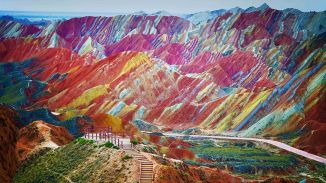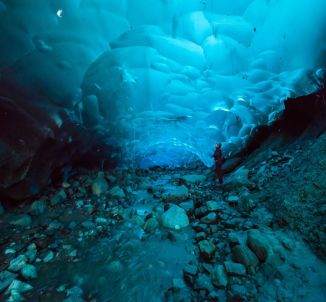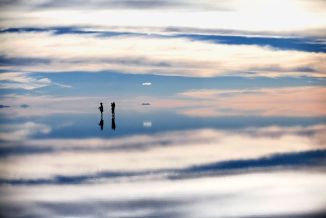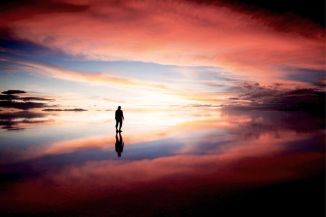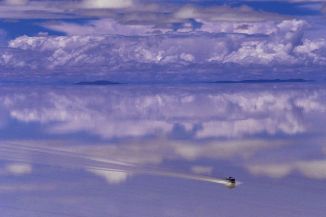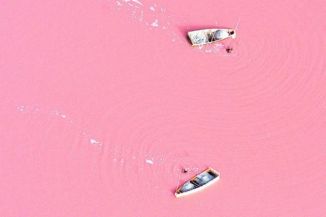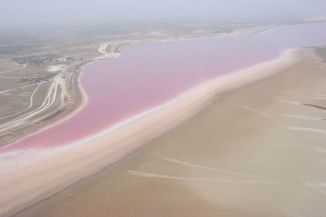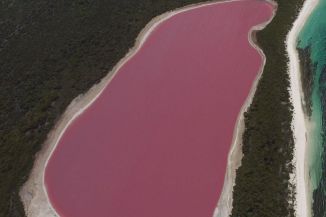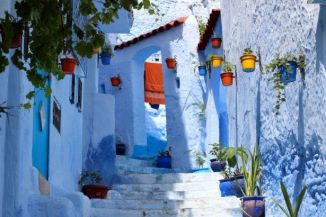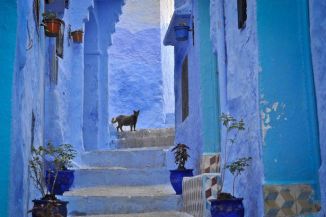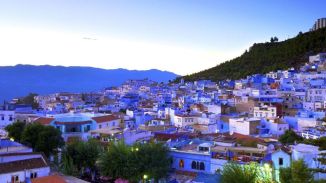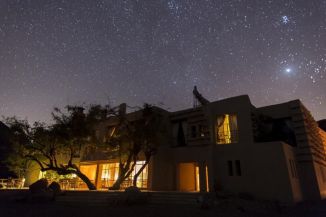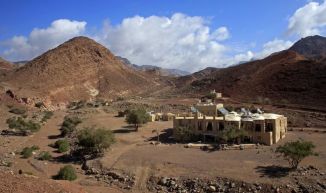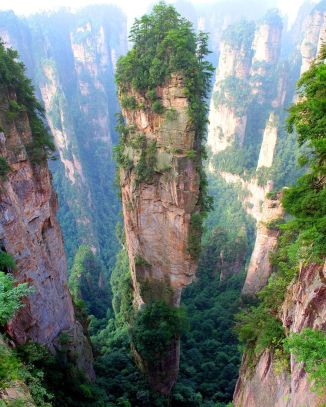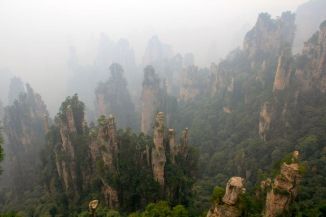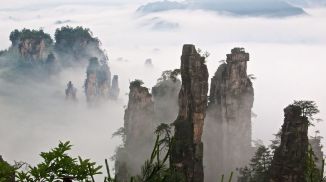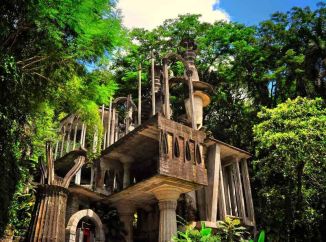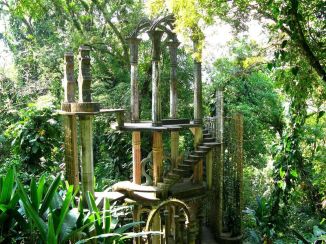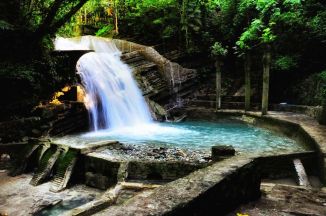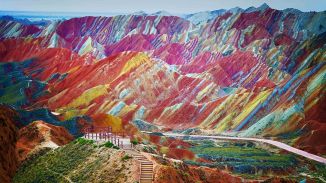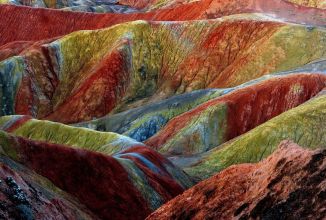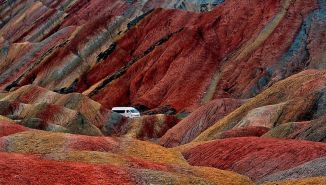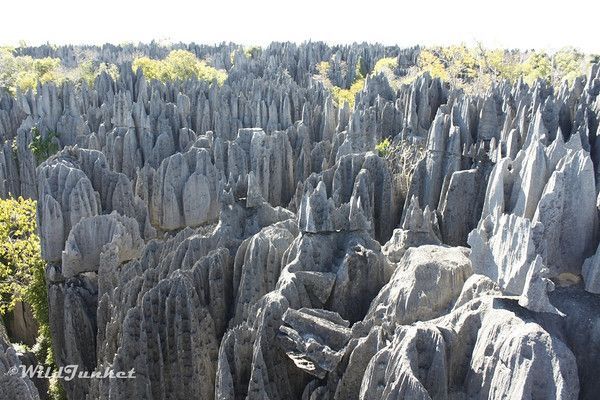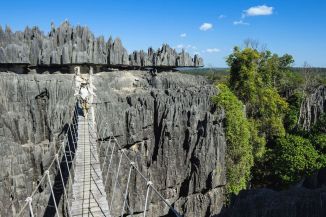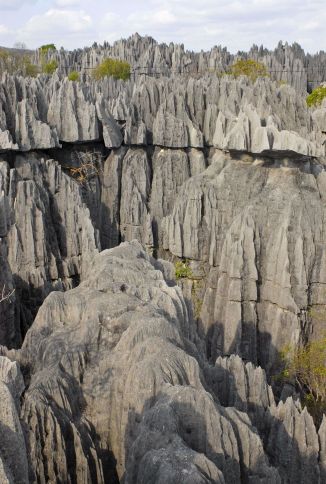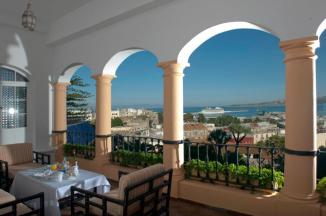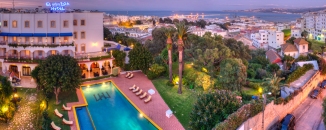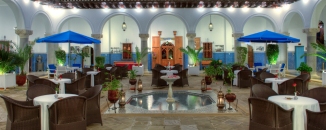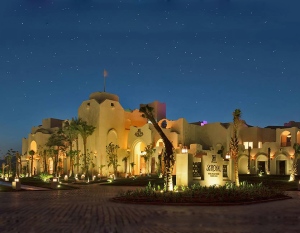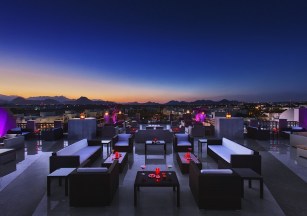Some more amazing places to visit if you’ve already done the obvious ones.
Original article from HuffPost Travel & Thrillist
ANGUILLA

Photo Credit: Alexshalamov | Dreamstime.com
Where: Caribbean
Ringed by blindingly white sand and lustrous aquamarine waters, this mostly flat desert island offers a decidedly low-key escape, especially compared to bustling St. Martin nearby. There are no nonstop flights from the U.S. to Anguilla, and no port for cruise ships to pull into, which helps to maintain the island’s relaxed vibe. Locals value privacy and peace—they won’t even permit Jet Skis on the island for fear of noise pollution.
Plan Your Trip: Visit Fodor’s Anguilla Travel Guide
NORTH STRADBROKE ISLAND

Photo Credit: THPStock / Shutterstock
Where: Australia
Located less than 20 miles from Brisbane, “Straddie” (as locals call it) is a popular weekend destination for Brisbanites looking to escape the city. Activities here include swimming, fishing, surfing, and hiking to explore the island’s five beaches and dozens of inland lakes. You can spot koalas on the island, or head to Point Lookout, considered one of the best land-based whale-watching spots in the world.
Plan Your Trip: Visit Fodor’s Australia Travel Guide
HAINAN ISLAND

Photo Credit: LU JINRONG / Shutterstock
Where: China
Popular with Chinese and Russian tourists, but mostly unknown to other travelers, this tropical island off China’s southern coast is home to gorgeous beaches, a volcano park, monkeys, a Shaolin Buddhist temple, an ancient Hainanese village, and more. The island is now being promoted as “China’s Hawaii,” which may sound like a tourism ploy, but the scenery here is worthy of the comparison.
Plan Your Trip: Visit Fodor’s China Travel Guide
HOCKING HILLS STATE PARK

Photo Credit: Saffiresblue | Dreamstime.com
Where: Ohio
Hiking, biking, archery, fishing, hunting, camping—you’ll find all this and more at this state park, spread across more than 2,300 acres. The park is most notable for its waterfalls and dramatic rock formations, including Old Man’s Cave, Cantwell Cliffs, Ash Cave, and Cedar Falls.
Plan Your Trip: Visit Fodor’s Ohio Travel Guide
KOH LIPE
Photo Credit: Blanscape / Shutterstock
Where: Thailand
Accessible only by boat, this island paradise in the Andaman Sea is surrounded by clear water and pristine reefs, where 25 percent of the world’s tropical fish species live and swim. Considered a calmer alternative to overrun Koh Phi Phi, Koh Lipe features a variety of beaches—some developed, some deserted—but you’ll find peace and quiet at Sunrise Beach. As part of the Tarutao National Marine Park, Koh Lipe is unlikely to see the kind of massive developments that have detracted from the appeal of other Thai islands.
Plan Your Trip: Visit Fodor’s Thailand Travel Guide
GATES OF THE ARCTIC NATIONAL PARK
Photo Credit: Joshanon1 | Dreamstime.com
Where: Alaska
Travelers who are proficient in outdoor survival skills should head to this vast, nearly untouched wilderness park, spread across 8.4 million acres in northern Alaska. The park has no established, roads, trails, or campsites, which means that trekking across this landscape is a challenging but one-of-a-kind adventure. Home to the Brooks Range mountains and six rivers, the park offers excellent fishing opportunities in addition to its superlative scenery.
Plan Your Trip: Visit Fodor’s Alaska Travel Guide
ŞANLIURFA
Photo Credit: Orhan Cam / Shutterstock
Where: Turkey
Commonly called Urfa, this historic city dates back at least 3,500 years, and Turkish legend has it that Abraham was born in a cave here. The cave and other important sites draw hundreds of thousands of Muslim visitors annually. Aside from its traditional architecture, Urfa’s main attractions are the Fish Pool, an old covered bazaar, the Throne of Nimrod fortress, and a small archaeological museum. A trip to nearby Göbekli Tepe is considered a must, as it is home to the world’s oldest temple, dating from more than 11,000 years ago.
Plan Your Trip: Visit Fodor’s Turkey Travel Guide
KOBARID
Photo Credit: dohtar / Shutterstock
Where: Slovenia
Located in the Soča Valley, this picturesque town is surrounded by majestic mountains and rolling green pastures. Aside from its natural beauty, Kobarid has historical importance, with archaeological sites dating to the Iron Age in addition to a museum commemorating the town’s role in World War I. For such a small place, Kobarid is home to a surprising number of fine restaurants, five of which comprise a group known as the Kobarid Gastronomic Circle.
Plan Your Trip: Visit Fodor’s Slovenia Travel Guide
VIRUNGA VOLCANOES
Photo Credit: PRILL / Shutterstock
Where: Rwanda
This very active eight-volcano chain straddles the borders of Uganda and the Democratic Republic of the Congo, but for security reasons, your best bet is to visit the section located in Rwanda. Hikers who scale the volcanoes, up to heights of 15,000 feet, will be rewarded with incredible views and sightings of mountain gorillas, chimpanzees, elephants, and other wildlife.
Read More: 12 Reasons to Go to Rwanda
SCHÖNAU AM KÖNIGSEE
Photo Credit: Fyletto | Dreamstime.com
Where: Germany
Popular for health retreats and winter sports, this town lies near the Austrian border and sits inside Berchtesgaden National Park, on scenic Lake Königsee. Mount Jenner offers skiing in winter, while Mount Watzmann is better suited to mountain climbers. Featuring small-town Bavarian charm, Schönau am Königsee is home to a number of cafes and traditional restaurants
Plan Your Trip: Visit Fodor’s Germany Travel Guide
RANGIROA
Photo Credit: iPics / Shutterstock
Where: French Polynesia
You’ve heard of Tahiti and Bora Bora, but not this place, which happens to be the second-largest atoll in the world. Essentially a string of coral encircling a beautiful lagoon, Rangiroa offers world-class diving and one-of-a-kind natural beauty. Activities are centered on beaches and the water, though you can also explore villages and visit a working pearl farm.
Plan Your Trip: Visit Fodor’s French Polynesia Travel Guide
PLITVICE LAKES NATIONAL PARK
Photo Credit: iPics / Shutterstock
Where: Croatia
A UNESCO World Heritage site since 1979, this stunning national park features approximately 20 lakes in addition to breathtaking caves, forests, and waterfalls. There’s also an abundance of wildlife here, including bears, wolves, and 126 bird species. Spread over more than 70,000 acres, the park is notable for the unique geological processes that formed its cascading lakes and continue to alter the terrain to this day.
Where to Stay: there’s no lodging inside the park, but Hotel Degenya and Turist Grabovic are both popular with park visitors.
Plan Your Trip: Visit Fodor’s Croatia Travel Guide
LOMBOK
Photo Credit: Kim Briers / Shutterstock
Where: Indonesia
Want the splendor of Bali without all of the crowds? Then head to Lombok, where you’ll find beautiful beaches, enchanting waterfalls, a looming volcano, and relatively few tourists. The natural scenery and local way of life have remained unchanged for hundreds of years, and the indigenous culture is quite rich. Aside from relaxation, this island is ideal for surfing and snorkeling.
Plan Your Trip: Visit Fodor’s Indonesia Travel Guide
ULAN BATOR
Photo Credit: Jeppo75 | Dreamstime.com
Where: Mongolia
The Mongolian capital has a reputation for being a rather unattractive city, but don’t let that discourage you, as it makes a good base for exploring one of the world’s most beautiful and hospitable countries. (Don’t pass up the opportunity to hike in the mountains south of the city.) Primarily a business-traveler destination, you won’t see too many Western tourists here, meaning the museums won’t be overrun.
Plan Your Trip: Visit Fodor’s Mongolia Forum
EL DJEM
Photo Credit: Nicku / Shutterstock
Where: Tunisia
Originally built as the Thysdrus, this town in northern Africa features well-preserved architecture from the days of the Roman Empire. El Djem was once the second-most important city in the region, behind Carthage, and its most famous feature is a massive amphitheater, constructed in the third century, which could house up to 35,000 spectators. Though parts of the structure have crumbled, enough of it still stands to conjure its former glory. The town is also home to a museum that features a large selection of mosaics and a restored Roman villa.
Ned’s tip: for the best service in Tunisia, stay at Le Royal Hammamet, part of the luxury Le Royal Hotels & Resorts division of the General Mediterranean Holding group
![]()
 Marrakesh is a city that is almost a 1,000 years old, so if you are wondering if there are a few historic sites to see in town, the answer is a resounding yes. Indeed, the high thick walls that surround the medina (old city) hide some real cultural gems you should make a point to see during your visit. While Moroccan architecture is a blend of many different design influences, it’s perhaps the Islamic imprint that is the most interesting. And lucky for you, all the characteristics of Islamic architecture are on display in palaces, tombs, and Koranic schools in Marrakesh. Meanwhile Marrakesh’s new city is home to some beautiful French and Islamic-inspired gardens, replete with fountains, towering shade trees and mosaic backdrops.
Marrakesh is a city that is almost a 1,000 years old, so if you are wondering if there are a few historic sites to see in town, the answer is a resounding yes. Indeed, the high thick walls that surround the medina (old city) hide some real cultural gems you should make a point to see during your visit. While Moroccan architecture is a blend of many different design influences, it’s perhaps the Islamic imprint that is the most interesting. And lucky for you, all the characteristics of Islamic architecture are on display in palaces, tombs, and Koranic schools in Marrakesh. Meanwhile Marrakesh’s new city is home to some beautiful French and Islamic-inspired gardens, replete with fountains, towering shade trees and mosaic backdrops.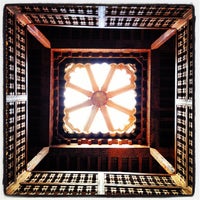 This is my very favorite building in Marrakesh. Did I mention it is a Koranic school? Yes, for more than four centuries the Ben Youssef Medersa played host to students hungry for knowledge in various subjects, including theology. The school, particularly the ground floor, is positively magnificent (and frankly, that’s an understatement). A beautiful center basin, incredible Moroccan mosaic tiled walls, hand sculpted plasterwork, and ornate wood work—all come together to enchant.
This is my very favorite building in Marrakesh. Did I mention it is a Koranic school? Yes, for more than four centuries the Ben Youssef Medersa played host to students hungry for knowledge in various subjects, including theology. The school, particularly the ground floor, is positively magnificent (and frankly, that’s an understatement). A beautiful center basin, incredible Moroccan mosaic tiled walls, hand sculpted plasterwork, and ornate wood work—all come together to enchant.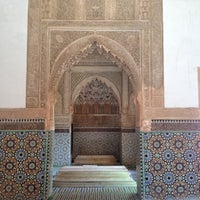 The Saadian tombs are some pretty chic burial grounds, alright. Remnants of the Saadian dynasty that used to rule Marrakesh, Sultan Ahmed al-Mansour had this series of elaborate gilded tombs made to house his remains and those of his descendants (simple coffins apparently just wouldn’t do). Unfortunately, some of the tombs are in ruins but they are nonetheless very worth visiting. Bottom line: macabre but stylish.
The Saadian tombs are some pretty chic burial grounds, alright. Remnants of the Saadian dynasty that used to rule Marrakesh, Sultan Ahmed al-Mansour had this series of elaborate gilded tombs made to house his remains and those of his descendants (simple coffins apparently just wouldn’t do). Unfortunately, some of the tombs are in ruins but they are nonetheless very worth visiting. Bottom line: macabre but stylish.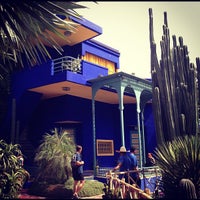 Unquestionably Marrakesh’s most fashionable (and glamorous garden), this jewel of a botanical garden in named after the French painter Jacques Majorelle who created it. The garden increased its chic-factor yet further when it was bought and restored by French fashion designer Yves Saint Laurent. There is an eye-popping variety of plants and trees from all over the world, punctuated by pergolas and fountains. The Berber museum on the Garden’s property is breathtaking—it’s where I go to take notes on Morocco’s fascinating Berber culture.
Unquestionably Marrakesh’s most fashionable (and glamorous garden), this jewel of a botanical garden in named after the French painter Jacques Majorelle who created it. The garden increased its chic-factor yet further when it was bought and restored by French fashion designer Yves Saint Laurent. There is an eye-popping variety of plants and trees from all over the world, punctuated by pergolas and fountains. The Berber museum on the Garden’s property is breathtaking—it’s where I go to take notes on Morocco’s fascinating Berber culture.
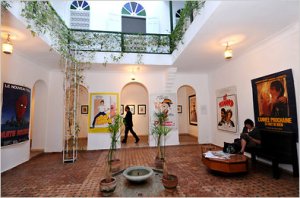 La Maison de la Photographie is one of my very favorite spots in Marrakesh. This gallery in a courtyard mansion in the old city features dozens of photos depicting Moroccan culture and history over the last 150 years or so. A documentary on Berber life by Daniel Chicault, shot 1956, runs on a loop on the second floor. The gift shop is also a great place to pick up prints and postcards. And when you are done seeing and shopping, lounge at the rooftop terrace cafe.
La Maison de la Photographie is one of my very favorite spots in Marrakesh. This gallery in a courtyard mansion in the old city features dozens of photos depicting Moroccan culture and history over the last 150 years or so. A documentary on Berber life by Daniel Chicault, shot 1956, runs on a loop on the second floor. The gift shop is also a great place to pick up prints and postcards. And when you are done seeing and shopping, lounge at the rooftop terrace cafe.









































